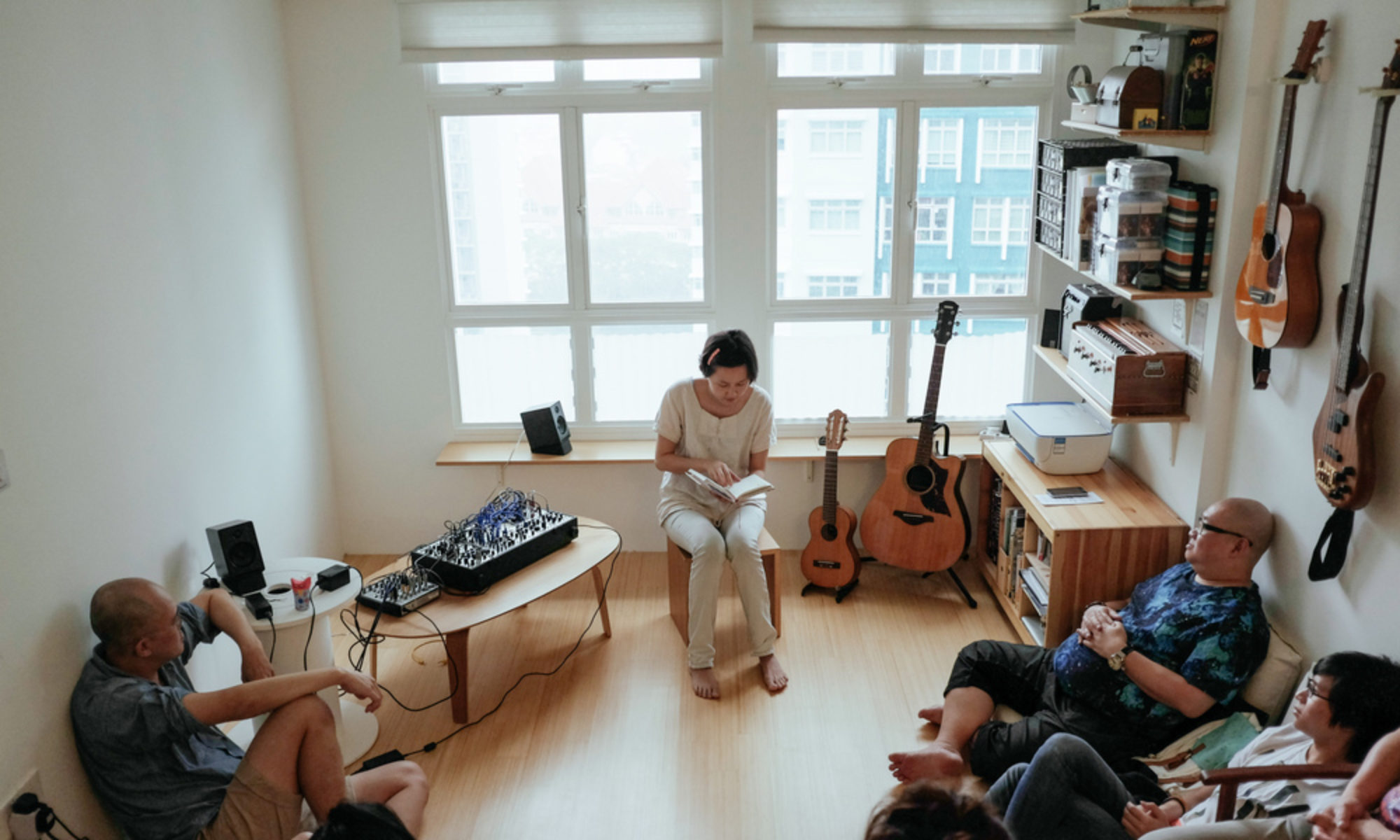The Dog of Art
Denise Levertov (1923 – 1997)
That dog with daisies for eyes
who flashes forth
flame of his very self at every bark
is the Dog of Art.
Worked in wool, his blind eyes
look inward to caverns and jewels
which they see perfectly,
and his voice
measures forth the treasure
in music sharp and loud,
sharp and bright,
bright flaming barks,
and growling smoky soft, the Dog
of Art turns to the world
the quietness of his eyes.
(1979)
Every time my creative endeavors leave me feeling blind and dumb, I think of this poem, and remember the lesson it taught me the first time I read it: as artists, we ‘flash forth the flame of our very selves’, and we do this in spite of — and because of — our own blindness. This poem tells us that it is okay that we are not all-seeing, and that it is actually our blindness that leads each of us towards a clear artistic vision. I have questioned this comforting lesson in subsequent reads. Is the poem really a comforting one for artists? If so, why does the Dog of Art finally turn to the world the quietness of his eyes? And why a Dog?
Levertov chose the dog carefully, for she describes the artist’s creative process as acts of loyalty, perseverance, obedience, protection, love(?). Beyond all else though, the artist has the quintessential trait of the domestic dog: servitude. The artist works in servitude to art. Levertov’s conclusion then is that art is the artist’s master, and the implications of this are immense.
To have art as one’s master implies servitude to the very notion of art itself; this could be defined as servitude to:
• what art was (or was not, but should have been)
• what art is (and is not, but perhaps should be),
• what art might one day become (that is to say, what the world might one day become)
This last implication is fascinating because in being subjected to what art was, is, and might be, the artist is thereby subjected to the world itself; we might then reformulate our definition of the artist as a dog who is in servitude to:
1. what the world was (or was not, but should have been)
2. what the world is (and is not, but perhaps should be)
3. what the world might one day become
If you accept the above as I have, Levertov’s conclusion opens up dramatically, for then artists are no longer servants of some ivory-tower conception of art, but are instead servants of past, present and future worlds. This third aspect – the artist-as-dog-servant-of-future-worlds – is most intriguing, and leads to my personal definition:
The artist is one who is a slave to possibility.
Yes; philosophers and scientists share this yoke of slavery. But while philosophers investigate as-yet-unknown possibilities and their implications and scientists work on testing, quantifying or utilising such possibilities, the artist does something incredibly unique; she empathises with the struggle of it all. Like philosophers and scientists, artists are sensitive towards possibility, but unlike them, artists relate to possibilities personally, befriending the void.
It is this particular sensitivity that leads artists towards and away from the ultimate possibility known to man: God. I don’t think it coincidence that much of (art) history has been a tug of war debating God’s existence. Again, unlike philosophers and scientists, artists respond quite differently; for artists, debate on God takes place not between artists but within artists, individually.
Why do we do this? Why is it that artists so often remain unwilling to throw aside the possibility of God (or no-God), long after the theists and atheists have left the stage? Perhaps ‘God’ is simply a creative well too deep and rich to ignore; but why can’t artists ignore the concept of God? Why can’t I ignore God in my art?
Perhaps there is something deeper at work within the artist, some part of working each craft that acknowledges this: “Death and life are in the power of the tongue, and those who love it will eat its fruits.” (Proverbs 18:21, ESV)

